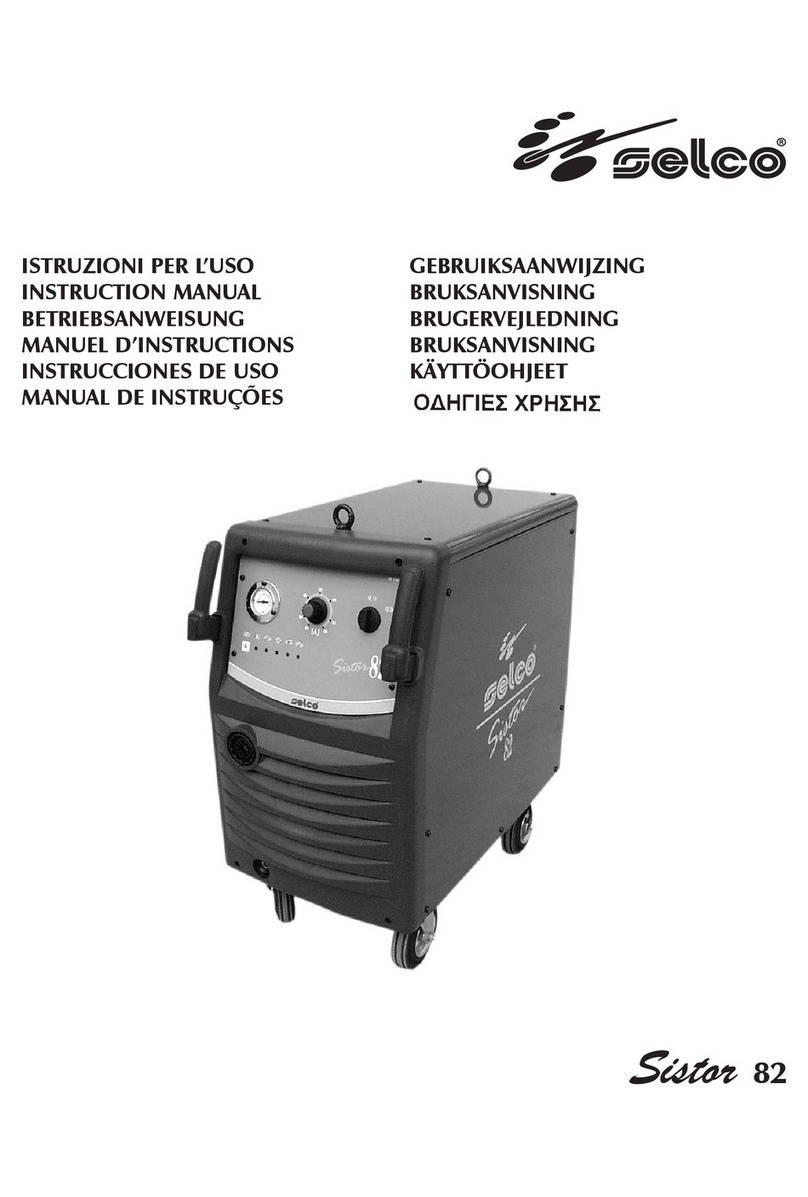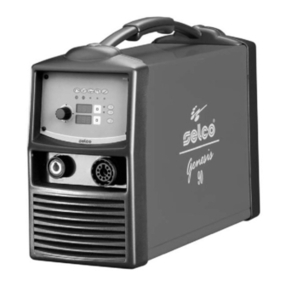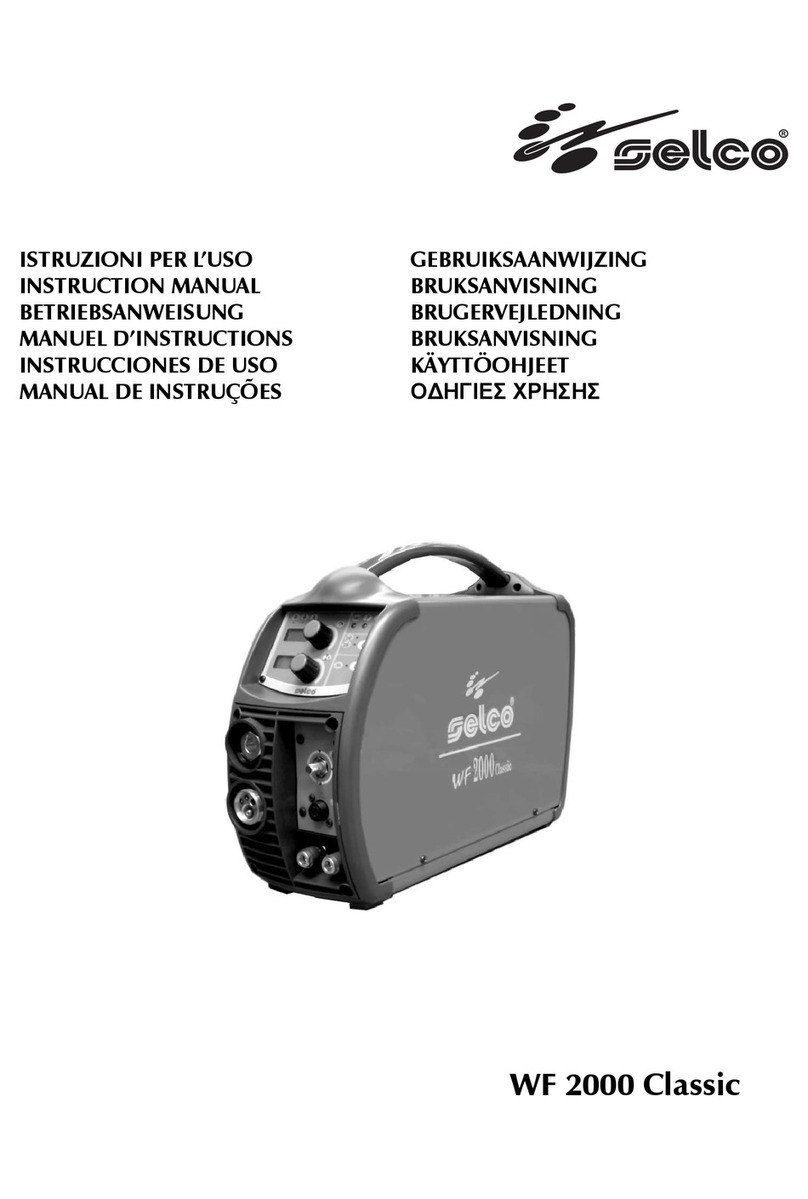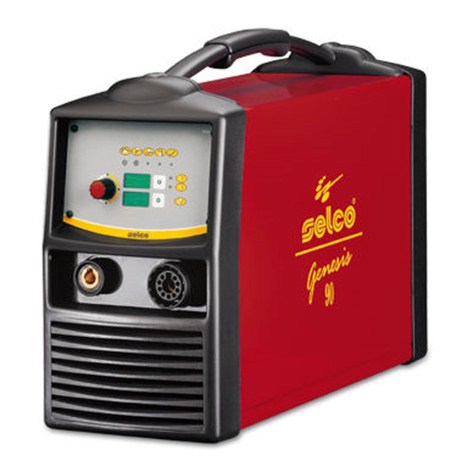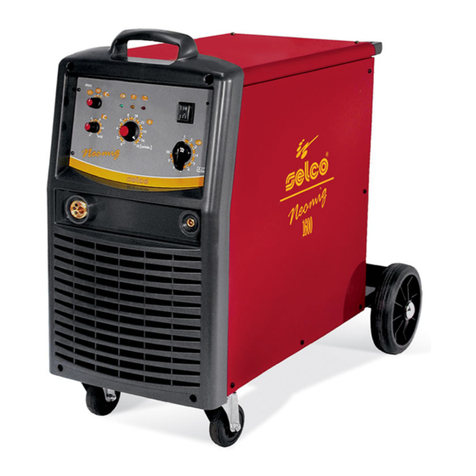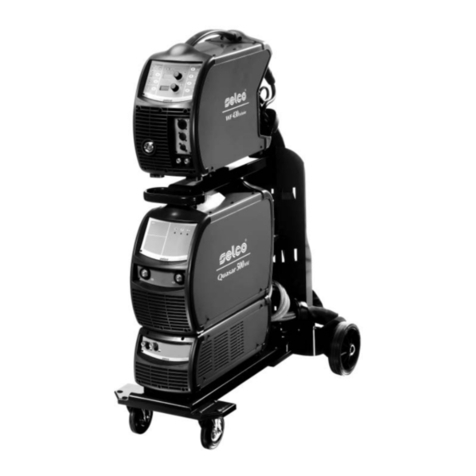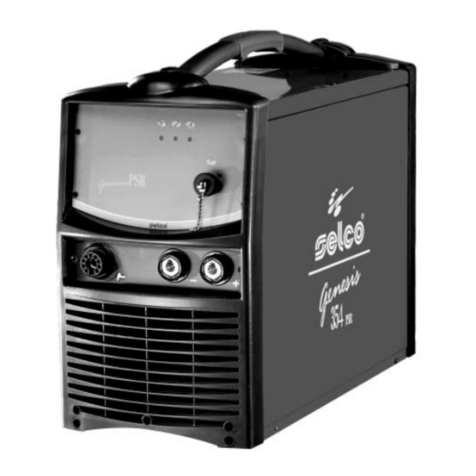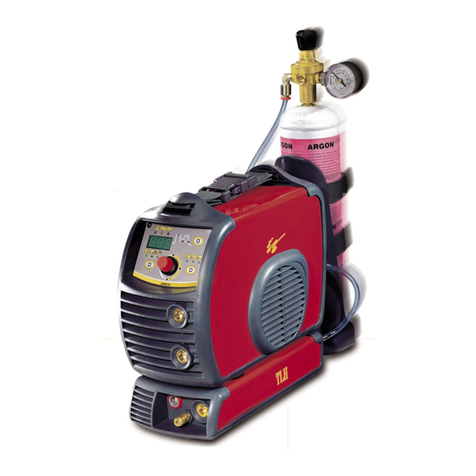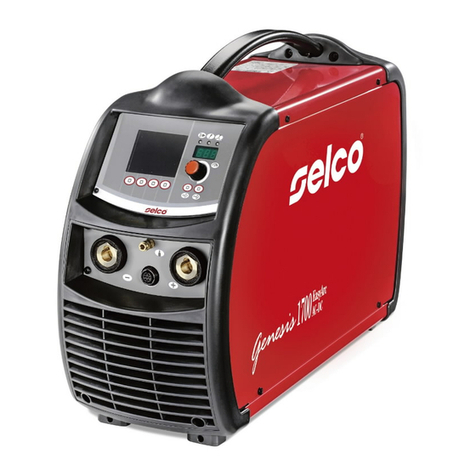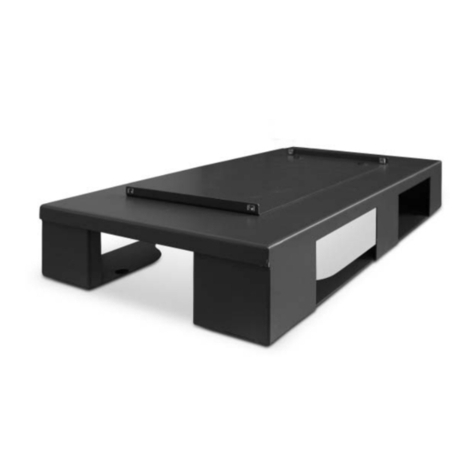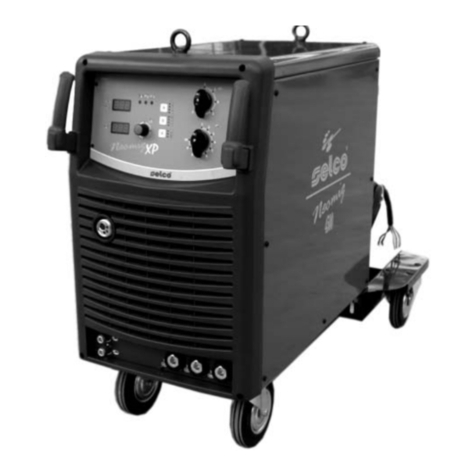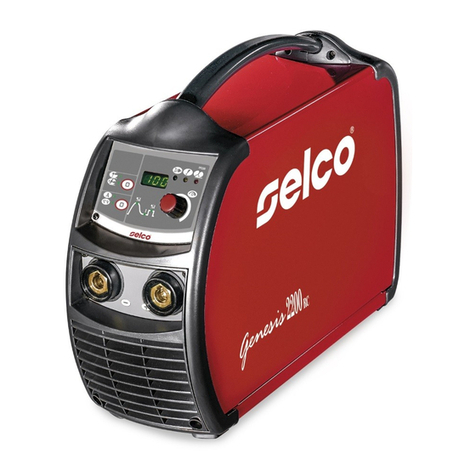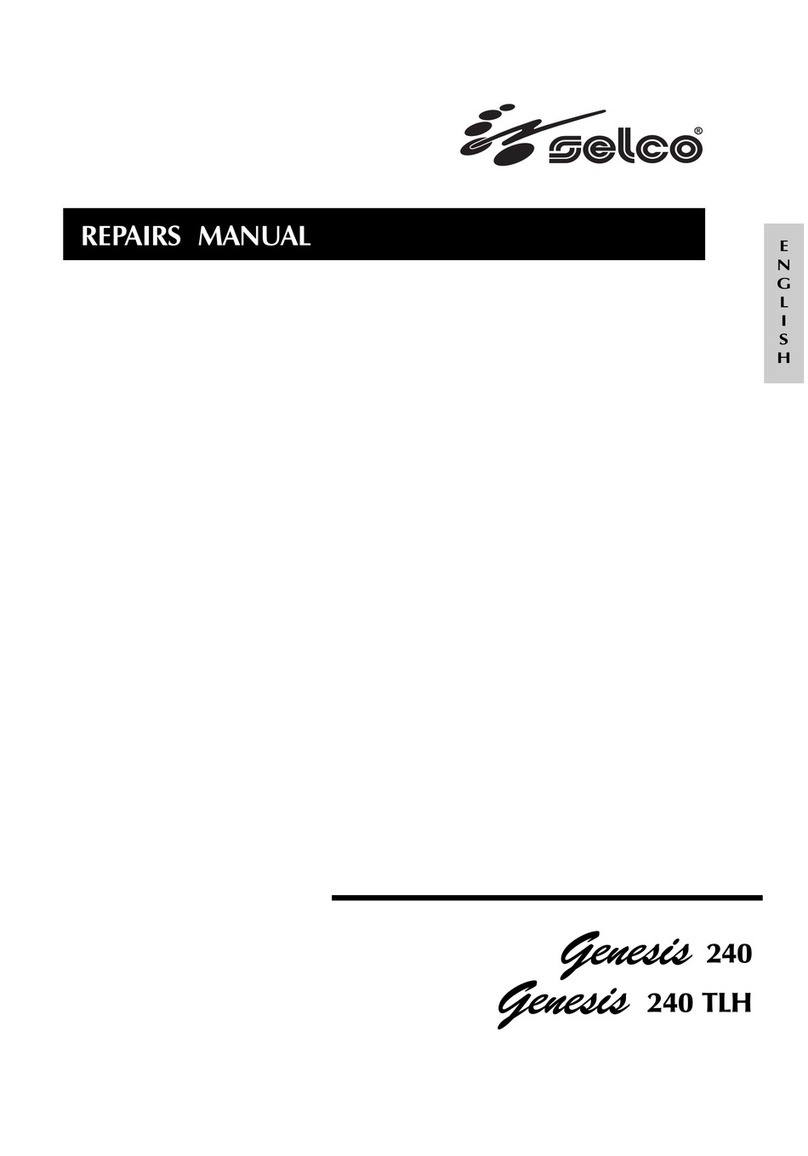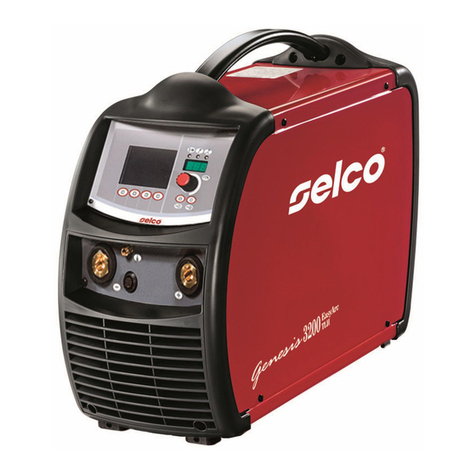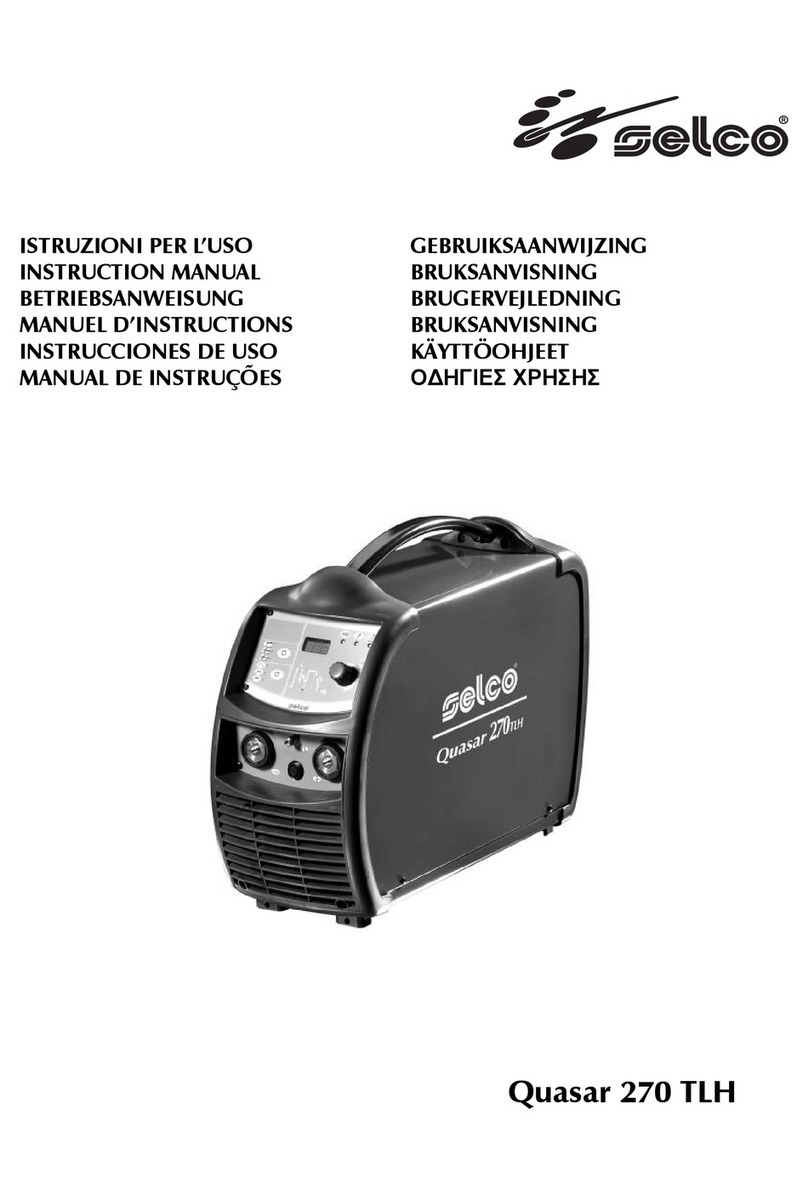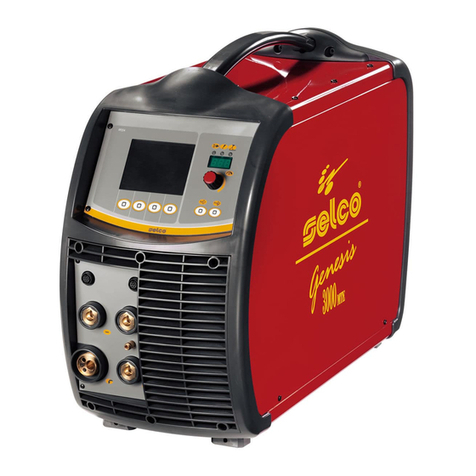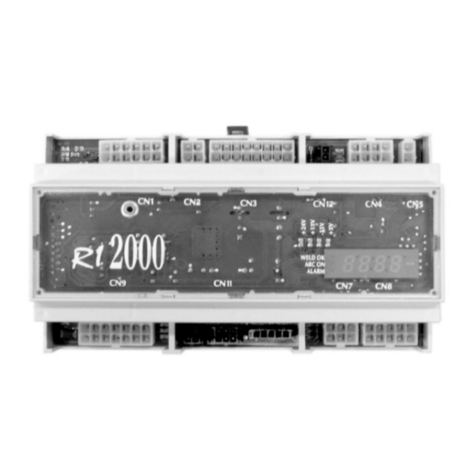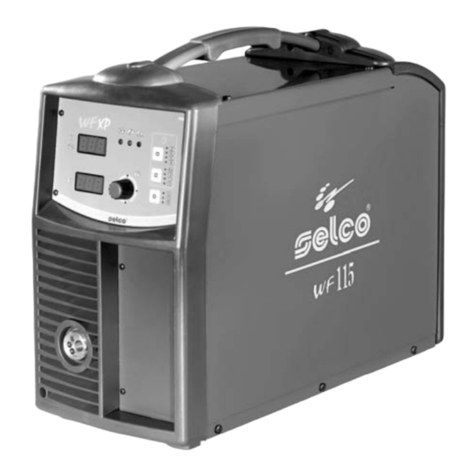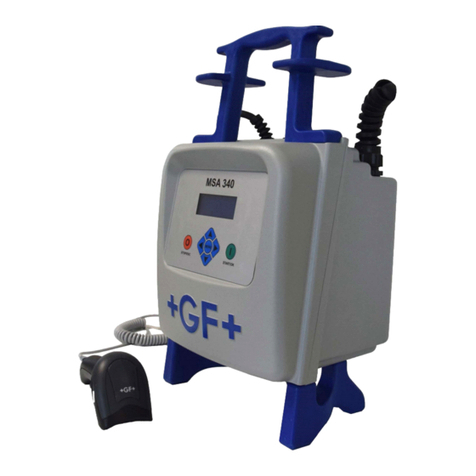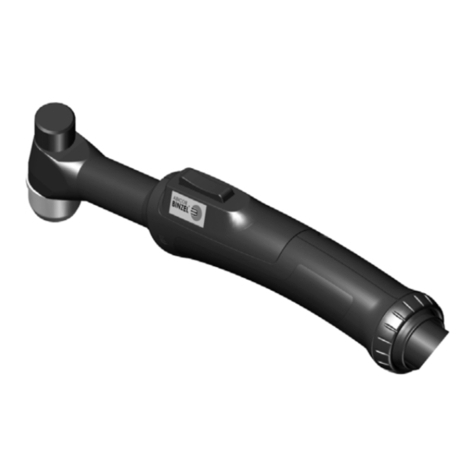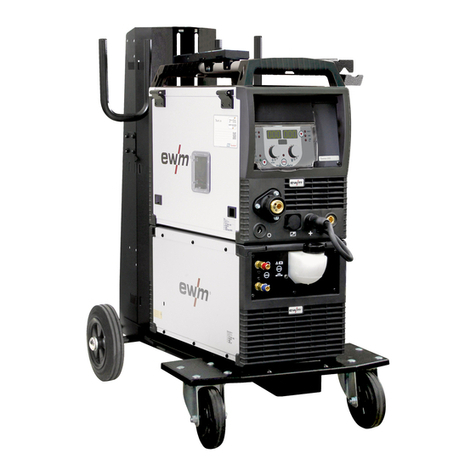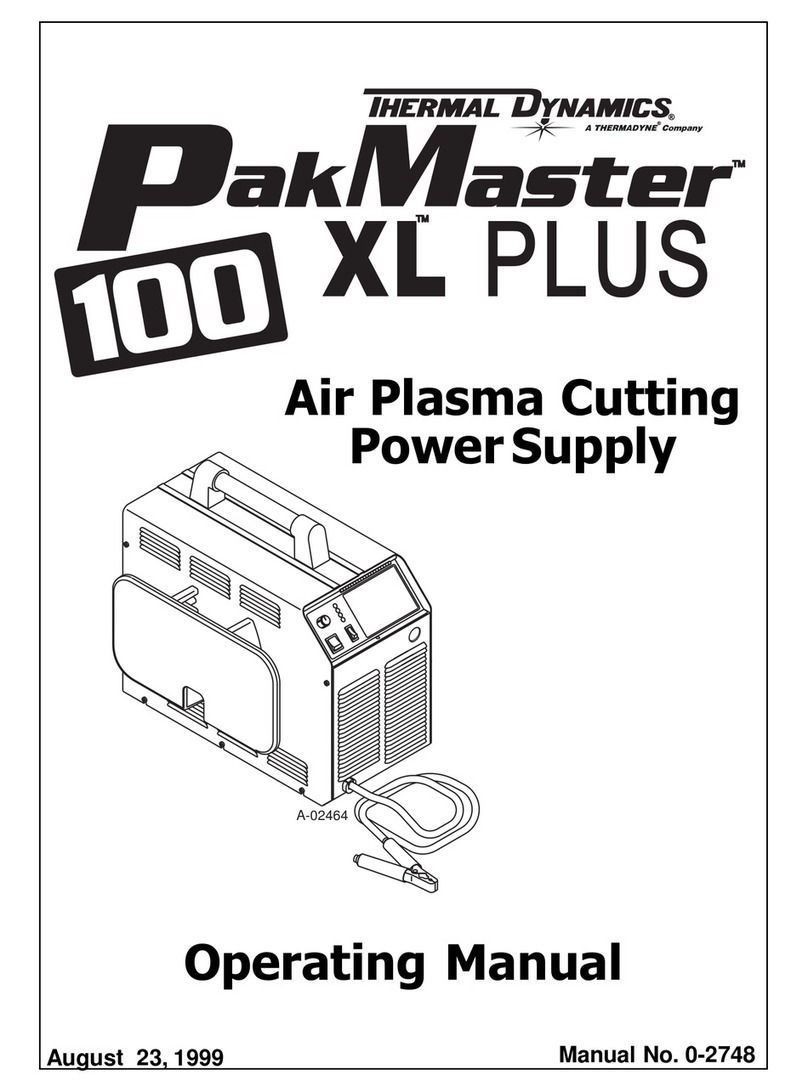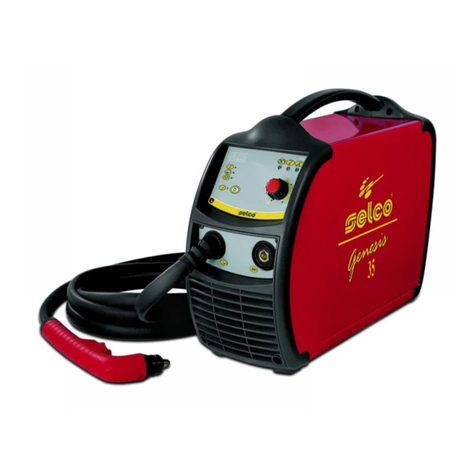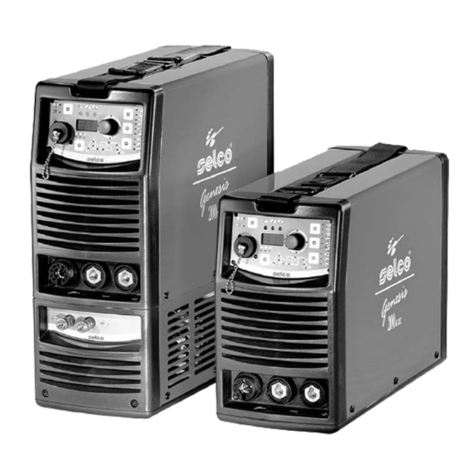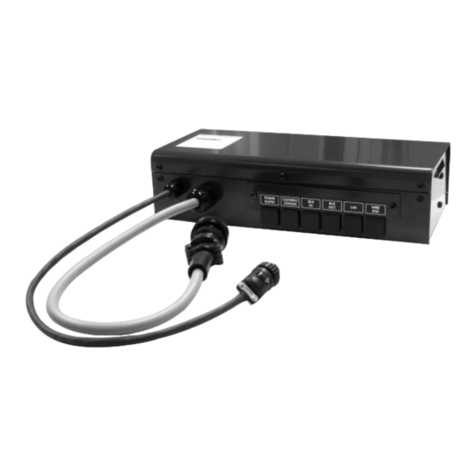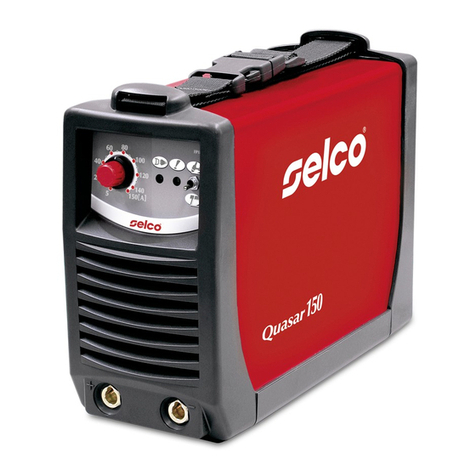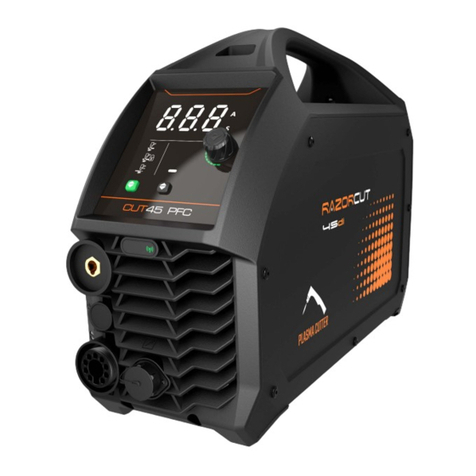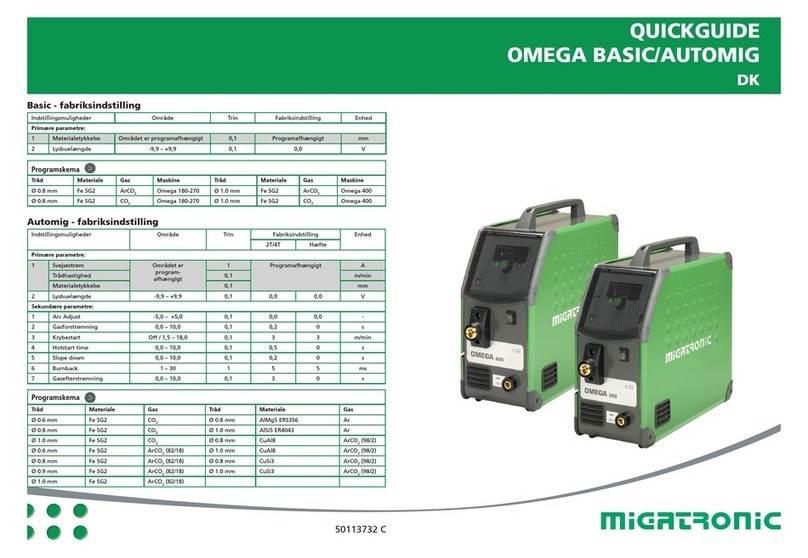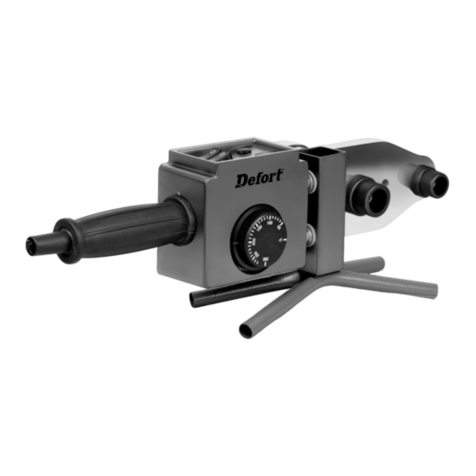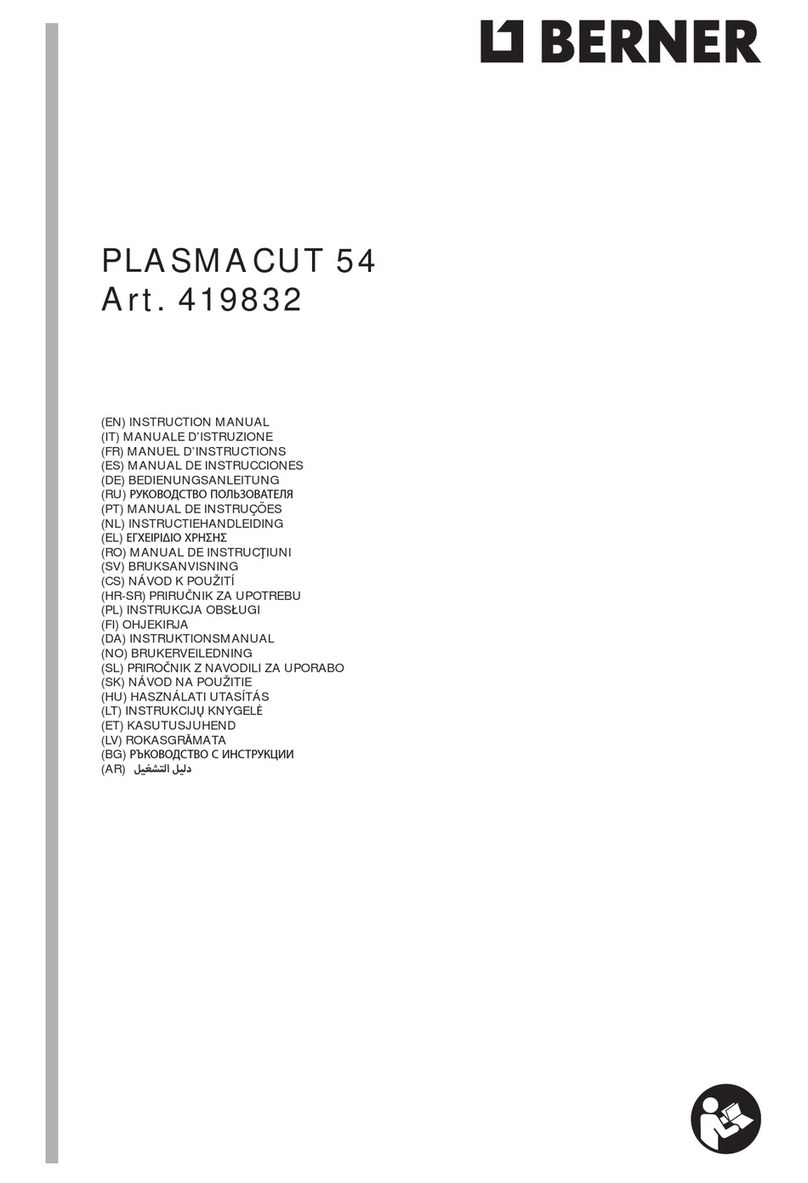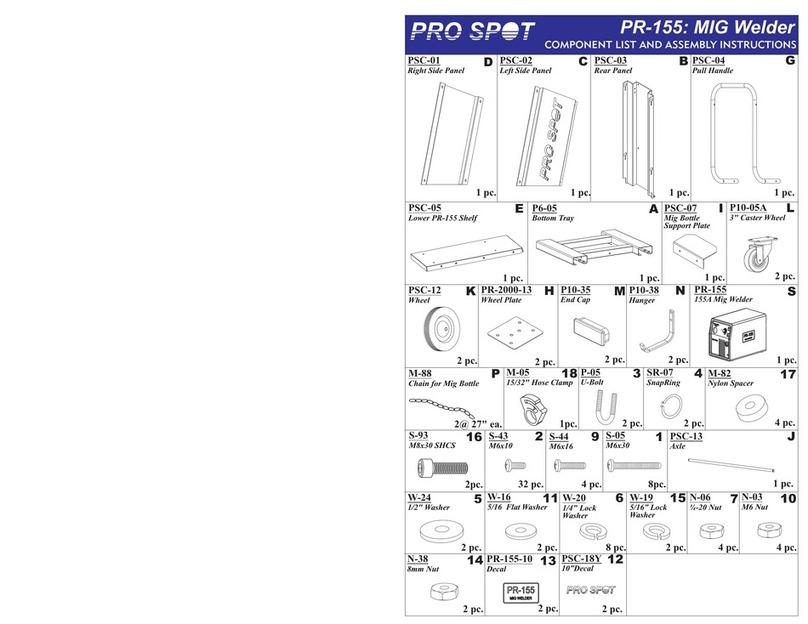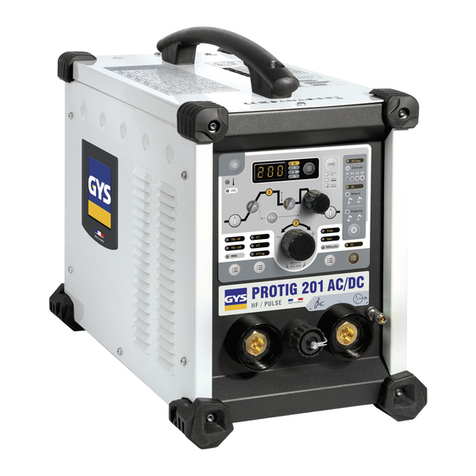
6
Assicurarsi che il gruppo di raffreddamento sia
spento prima di sconnettere i tubi di mandata e
ritorno del liquido refrigerante. Il liquido caldo in
uscita potrebbe causare gravi ustioni o scottature.
Provvedere ad un’attrezzatura di pronto soccorso.
Non sottovalutare scottature o ferite.
Prima di lasciare il posto di lavoro, porre in sicu-
rezza l'area di competenza in modo da impedire
danni accidentali a cose o persone.
1.3 Protezione da fumi e gas
• Fumi, gas e polveri prodotti dal processo di saldatura possono
risultare dannosi alla salute.
I fumi prodotti durante il processo di saldatura possono, in
determinate circostanze, provocare il cancro o danni al feto
nelle donne in gravidanza.
• Tenere la testa lontana dai gas e dai fumi di saldatura.
• Prevedere una ventilazione adeguata, naturale o forzata, nella
zona di lavoro.
• In caso di aerazione insufficiente utilizzare maschere dotate
di respiratori.
• Nel caso di saldature in ambienti angusti è consigliata la
sorveglianza dell’operatore da parte di un collega situato
esternamente.
• Non usare ossigeno per la ventilazione.
• Verificare l'efficacia dell'aspirazione controllando periodica-
mente l'entità delle emissioni di gas nocivi con i valori ammes-
si dalle norme di sicurezza.
• La quantità e la pericolosità dei fumi prodotti è riconducibile
al materiale base utilizzato, al materiale d'apporto e alle even-
tuali sostanze utilizzate per la pulizia e lo sgrassaggio dei pezzi
da saldare. Seguire attentamente le indicazioni del costruttore
e le relative schede tecniche.
• Non eseguire operazioni di saldatura nei pressi di luoghi di
sgrassaggio o verniciatura.
Posizionare le bombole di gas in spazi aperti o con un buon
ricircolo d’aria.
1.4 Prevenzione incendio/scoppio
• Il processo di saldatura può essere causa di incendio e/o scoppio.
• Sgomberare dalla zona di lavoro e circostante i materiali o gli
oggetti infiammabili o combustibili.
I materiali infiammabili devono trovarsi ad almeno 11 metri
(35 piedi) dall'ambiente di saldatura o devono essere oppor-
tunamente protetti.
Le proiezioni di scintille e di particelle incandescenti possono
facilmente raggiungere le zone circostanti anche attraverso
piccole aperture. Porre particolare attenzione nella messa in
sicurezza di cose e persone.
• Non eseguire saldature sopra o in prossimità di recipienti in
pressione.
• Non eseguire operazioni di saldatura su recipienti o tubi chiusi.
Porre comunque particolare attenzione nella saldatura di tubi
o recipienti anche nel caso questi siano stati aperti, svuotati e
accuratamente puliti. Residui di gas, carburante, olio o simili
potrebbe causare esplosioni.
• Non saldare in atmosfera contenente polveri, gas o vapori esplosivi.
• Accertarsi, a fine saldatura, che il circuito in tensione non possa
accidentalmente toccare parti collegate al circuito di massa.
• Predisporre nelle vicinanze della zona di lavoro un’ attrezza-
tura o un dispositivo antincendio.
1.5 Prevenzione nell’uso delle bombo-
le di gas
• Le bombole di gas inerte contengono gas sotto pressione e
possono esplodere nel caso non vengano assicurate le condi-
zioni minime di trasporto, mantenimento e uso.
• Le bombole devono essere vincolare verticalmente a pareti o ad altro,
con mezzi idonei, per evitare cadute o urti meccanici accidentali.
• Avvitare il cappuccio a protezione della valvola durante il
trasporto, la messa in servizio e ogni qualvolta le operazioni
di saldatura siano terminate.
• Evitare che le bombole siano esposte direttamente ai raggi
solari, a sbalzi elevati di temperatura, a temperature troppo
alte o troppo rigide, Non esporre le bombole a temperature
troppo rigide o troppo alte.
• Evitare che le bombole entrino in contatto con fiamme libere,
con archi elettrici, con torce o pinze porta elettrodo, con le
proiezioni incandescenti prodotte dalla saldatura.
• Tenere le bombole lontano dai circuiti di saldatura e dai cir-
cuiti di corrente in genere.
• Tenere la testa lontano dal punto di fuoriuscita del gas quando
si apre la valvola della bombola.
• Chiudere sempre la valvola della bombola quando le opera-
zioni di saldatura sono terminate.
• Non eseguire mai saldature su una bombola di gas in pressione.
• Non collegare mai una bombola di aria compressa diretta-
mente al riduttore della macchina!
La pressione potrebbe superare la capacità del riduttore che
quindi potrebbe esplodere!
1.6 Protezione da shock elettrico
• Uno shock da scarica elettrica può essere mortale.
• Evitare di toccare parti normalmente in tensione interne o
esterne all'impianto di saldatura mentre l'impianto stesso è ali-
mentato (torce, pinze, cavi massa, elettrodi, fili, rulli e bobine
sono elettricamente collegati al circuito di saldatura).
• Assicurare l'isolamento elettrico dell'impianto e dell'operatore
di saldatura utilizzando piani e basamenti asciutti e sufficien-
temente isolati dal potenziale di terra e di massa.
• Assicurarsi che l'impianto venga allacciato correttamente ad
una spina e ad una rete provvista del conduttore di protezio-
ne a terra.
• Non toccare contemporaneamente due torce o due pinze
portaelettrodo.
Interrompere immediatamente le operazioni di saldatura se si
avverte la sensazione di scossa elettrica.

